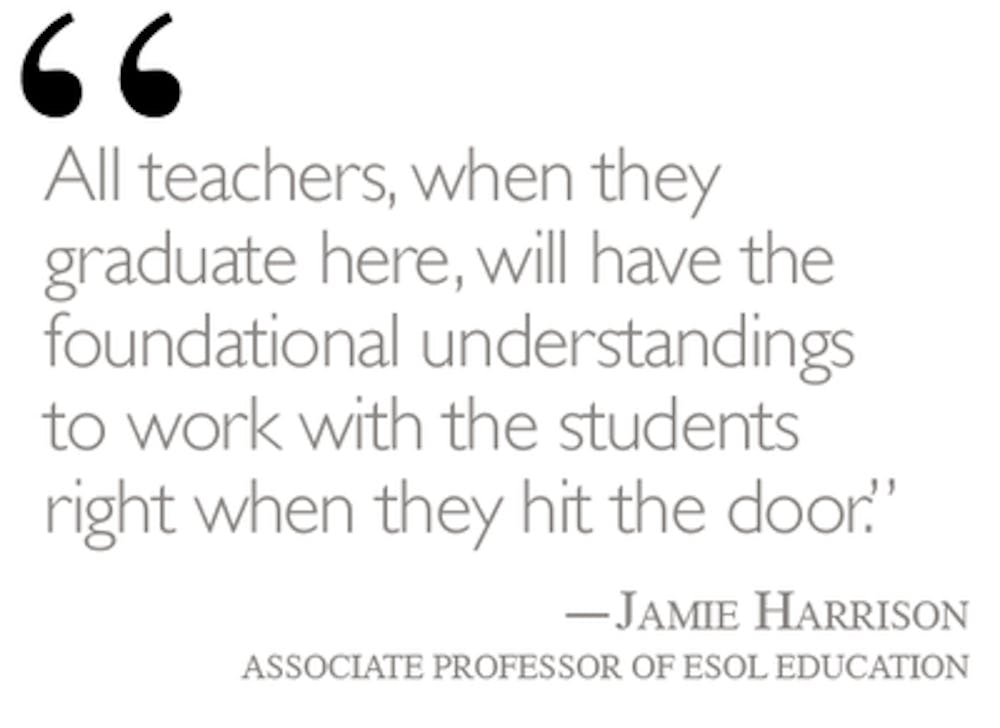From kindergarten through high school, students learning English as a second language are usually separated in the classroom from native English speakers, but not by choice.
In a new program at Auburn University, teachers are developing curriculums designed to not only involve emerging and native English speakers together, but also instruct students in their primary language.
As immigrant populations continue to rise and the diversity of languages increases, English-centric curriculums are being questioned as limiting to, or not providing clear information for, English for speakers of other languages (ESOL)students.
While students will usually develop conversational English skills outside the classroom, their poor marks in school reflect on their inability to grasp new concepts taught to them in academic English, according to Jamie Harrison, associate professor of ESOL education.
Literacy and inquiry in the content areas, a graduate-level online course co-taught by professors Harrison and Vicki Cardullo, assigned both professors and students exercises. The exercises were meant to make them think about teaching ESOL students and communicating the lessons in ways they can understand.
"We didn't want to overload the student and make the content too difficult or too much, because it is basically two different contents: reading and English as a second language," Cardullo said. "For the most part, really, there was nothing that showed students how to develop an ESL stance in order to effectively teach them how to teach the students. This is cutting-edge for us."
Cardullo said attempting to prepare for every language is impossible.
Teaching ESOL students classroom skills and providing them with resources in their own native language is far more practical.
"If they're reading about science, it might not be that they don't understand the science content, it's the language that they have to maneuver through to get to the content that is the problem," said Kelly Hill, associate clinical professor of curriculum and teaching.
Hill said many teachers are not aware of the cause of their students learning delays.
"Many teachers don't really know what to do to help them," Hill said. "Many of them don't realize that it's not a cognitive issue, it's a language issue."
Hill, recent addition to the Auburn faculty, will be assuming Harrison's co-teaching position in reading and inquiry.
Harrison will head fundamentals of language and literacy instruction this fall.
In the spring of 2015, both will present Auburn's ESOL programs as part of a research panel on the reading development of bilingual students, hosted by ESOL Education in Ontario, Canada.
ESOL training at Auburn is already underway and in the process of expanding to all departments in the College of Curriculum and Teaching.
However, the programs do come with a price.
In order to accommodate the new program's place in the curriculum, other classes had to be cut or merged.
"It was a departmental decision," Cardullo said. "I think everyone on the faculty floor felt it was a hot topic looking in how we're preparing our teachers to help prepare our students."
Marti Dunaway, graduate student who took Harrison and Cardullo's class over the summer, called the experience "eye-opening."
"I had never even really thought about teaching kids English as a second language [before this class]," Dunaway said. "We all acquire language the same way, even if it's a new language. If an adult is learning English it's the same as a 3- year-old learning English."
Both classes are filled to capacity.
"All teachers, when they graduate here, will have the foundational understandings to work with the students right when they hit the door," Harrison said.
Do you like this story? The Plainsman doesn't accept money from tuition or student fees, and we don't charge a subscription fee. But you can donate to support The Plainsman.





